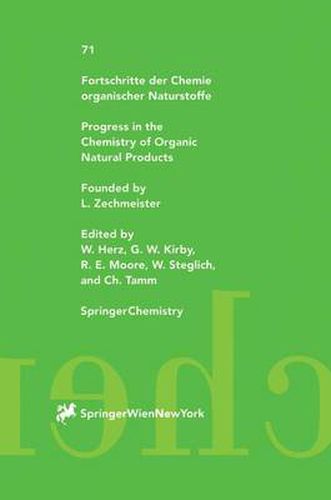Readings Newsletter
Become a Readings Member to make your shopping experience even easier.
Sign in or sign up for free!
You’re not far away from qualifying for FREE standard shipping within Australia
You’ve qualified for FREE standard shipping within Australia
The cart is loading…






This title is printed to order. This book may have been self-published. If so, we cannot guarantee the quality of the content. In the main most books will have gone through the editing process however some may not. We therefore suggest that you be aware of this before ordering this book. If in doubt check either the author or publisher’s details as we are unable to accept any returns unless they are faulty. Please contact us if you have any questions.
For centuries preparations containing resin from the root of Thapsia garganica L. (Fig. 1) have been used in Arabian and European medicine for treatment of pulmonary diseases, catarrh and as counterirritants for relief of rheumatic pains (1). The properties of the resin were described already by Theophrastos (372-287 B. C. ), Dioscorides (approximately A. D. 50), and Plinius (A. D. 24-79) (2). Radix Thapsiae and Resina Thapsiae have been included in several pharmacopoeias, the latest in the French pharmacopoeia from 1937. The two major active principles were about Fig. I. Thapsia garganica References, pp. 163-167 Sesquiterpenoids from Thapsia Species 131 Thapsigargin (1), Rl: Oct, R2= But Thapsigargicin (2), Rl= Hex, R2 = But Thapsitranstagin (3), Rl: iVai, R2= 2-MeBut Thapsivillosin A (4), Rl= Ang, R2= Sen Thapsivillosin B ( 5), Rl: Ang, R2= 2-MeBut Thapsivillosin C ( 6), Rl= Oct, R2= 2-MeBut Thapsivillosin D ( 7), Rl: 6-MeOct, R2= Sen Thapsivillosin E ( 8), Rl: 6-MeOct, R2= 2-MeBut Thapsivillosin G ( 9), Rl= 6-MeHcp, R2= 2-MeBut Thapsivillosin H ( 10), Rl or R2= Ang or Sen Thapsivillosin I ( 11), Rl= Ang, R2= But Thapsivillosin J ( 12), Rl: iVai, R2= But Thapsivillosin K ( 13), Rl: Sen, R2= 2-MeBut Chart 1. Hexaoxygenated thapsigargins found in Thapsia two decades ago found to be the sesquiterpene lactones thapsigargin (1) and thapsigargicin (2) (3).
$9.00 standard shipping within Australia
FREE standard shipping within Australia for orders over $100.00
Express & International shipping calculated at checkout
This title is printed to order. This book may have been self-published. If so, we cannot guarantee the quality of the content. In the main most books will have gone through the editing process however some may not. We therefore suggest that you be aware of this before ordering this book. If in doubt check either the author or publisher’s details as we are unable to accept any returns unless they are faulty. Please contact us if you have any questions.
For centuries preparations containing resin from the root of Thapsia garganica L. (Fig. 1) have been used in Arabian and European medicine for treatment of pulmonary diseases, catarrh and as counterirritants for relief of rheumatic pains (1). The properties of the resin were described already by Theophrastos (372-287 B. C. ), Dioscorides (approximately A. D. 50), and Plinius (A. D. 24-79) (2). Radix Thapsiae and Resina Thapsiae have been included in several pharmacopoeias, the latest in the French pharmacopoeia from 1937. The two major active principles were about Fig. I. Thapsia garganica References, pp. 163-167 Sesquiterpenoids from Thapsia Species 131 Thapsigargin (1), Rl: Oct, R2= But Thapsigargicin (2), Rl= Hex, R2 = But Thapsitranstagin (3), Rl: iVai, R2= 2-MeBut Thapsivillosin A (4), Rl= Ang, R2= Sen Thapsivillosin B ( 5), Rl: Ang, R2= 2-MeBut Thapsivillosin C ( 6), Rl= Oct, R2= 2-MeBut Thapsivillosin D ( 7), Rl: 6-MeOct, R2= Sen Thapsivillosin E ( 8), Rl: 6-MeOct, R2= 2-MeBut Thapsivillosin G ( 9), Rl= 6-MeHcp, R2= 2-MeBut Thapsivillosin H ( 10), Rl or R2= Ang or Sen Thapsivillosin I ( 11), Rl= Ang, R2= But Thapsivillosin J ( 12), Rl: iVai, R2= But Thapsivillosin K ( 13), Rl: Sen, R2= 2-MeBut Chart 1. Hexaoxygenated thapsigargins found in Thapsia two decades ago found to be the sesquiterpene lactones thapsigargin (1) and thapsigargicin (2) (3).